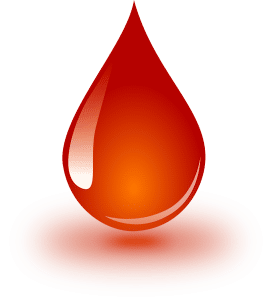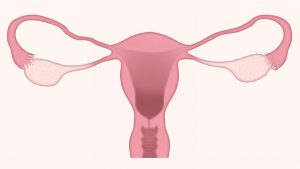Cases of endometrial cancer are rising in the U.S.: according to the American Cancer Society, roughly 65,950 new cases of cancer of the uterus will be diagnosed in 2022, and around 12,550 women will die from these cancers. Endometrial cancer has typically not affected women under the age of 45, but it is becoming more common in younger women because of the rise of obesity in this country. In fact, the risk of developing endometrial cancer for women aged 20 to 29 rose from 0.6 per 100,000 women to 1.2 per 100,000 women from 2000 to 2017. March is National Endometriosis Awareness Month, and we want to raise awareness of the rise of this type of cancer, and give you tips for reducing your risk of developing it.
What is Endometrial Cancer?
Endometrial cancer is the most common type of cancer of the uterus. It develops when cells start to grow out of control in the lining of the uterus, or the endometrium. According to the American Cancer Society, there are different grades of endometrial cancer:
- Grade 1 tumors have 95% or more of cancer tissue forming glands.
- Grade 2 tumors have between 50% and 94% of cancer tissue forming glands.
- Grade 3 tumors have less than half of cancer tissue forming glands.
Causes

Doctors are not 100% sure what causes endometrial cancer, other than the fact that women who develop it have mutations in the DNA of cells in their endometrium. We do know, though, that it most commonly affects Caucasian women, although African American women are more likely to die from it.
In addition, there are other risk factors that can increase the risk of endometrial cancer: for example, being overweight can be one contributing factor, since excess weight can mean an increase in estrogen, which affects the endometrium.
According to Dr. Mehdi Kebria, a gynecologic oncologist at City of Hope, “Excessive estrogen exposure leads to thickening of the endometrium and eventually long-term exposure to high amounts of estrogen can lead to endometrial cancer.”
Aside from excess weight, the other factors that can increase your risk of developing endometrial cancer include:
- Diabetes
- Age- The older you are, the greater your risk for endometrial cancer
- Family history- If you have close relatives, such as a parent or sibling, who have endometrial or colorectal cancer, you are more likely to develop it.
- Hormone therapy for breast cancer– Taking the hormone therapy drug Tamoxifen can increase the risk of developing endometrial cancer.
- Obesity- Excess body fat alters your body’s balance of hormones, which increases your cancer risk.
- Never having been pregnant
- Being diagnosed with Lynch syndrome- This genetic condition increases your risk of colon cancer, endometrial cancer, and several other cancers.
Symptoms

Early detection is important for treating endometrial cancer: the earlier it is detected, the more likely you are to survive. In fact, the American Cancer Society estimates that there are more than 600,000 endometrial cancer survivors in the U.S. today, mainly because women are more aware of early symptoms, and are seeking medical care and getting treatment.
These early signs of endometrial cancer include:
- Abnormal vaginal discharge
- Pelvic pain
- Unusual vaginal bleeding or spotting
- Vaginal bleeding after menopause
- Painful urination
- Unexplained weight loss
“Most of the time it’s detected with some vaginal spotting or bleeding. That’s the most common symptom,” says Dr. Ursula Matulonis, chief of the gynecologic oncology division at Dana-Farber Cancer Institute in Boston. “By no means does that necessarily mean that someone’s going to develop or has already a diagnosis of endometrial cancer, but it’s a signal.”
“Pain in the pelvis, feeling a mass (tumor), and losing weight without trying can also be symptoms of endometrial cancer,” according to the American Cancer Society. “These symptoms are more common in later stages of the disease.”
Of course, for any possible symptom of cancer, it’s important to promptly see your doctor. “Any delay in seeking medical help may allow the disease to progress even further,” the ACS emphasizes. “This lowers the odds of treatment being successful.”
Diagnosis
If you are experiencing symptoms, your doctor might perform an endometrial biopsy, a transvaginal ultrasound, or other tests. These tests can be used to help diagnose or rule out uterine cancer. Your doctor might do this test in their office, or they may refer you to another doctor. 
- Endometrial biopsy involves taking a small tissue sample from the uterus and analyzing it for cancer.
- Transvaginal ultrasound uses sound waves to spot issues such as a tumor or an endometrium that’s thicker than normal, which could mean endometrial cancer.
- Hysteroscopy, which involves putting a small telescope in the uterus to get a close view of the lining.
- CT scan or an MRI to check if the cancer has spread.
Treatment
Endometrial cancer is highly treatable when found early. Treatment depends on the stage of endometrial cancer. There are generally 5 standard treatments used:
- Surgery
- Radiation therapy
- Chemotherapy
- Hormone therapy
- Targeted therapy
Endometrial cancer is often caught in stage 1, so the treatment is commonly surgery to remove the uterus (a hysterectomy). If the cancer has spread to the ovaries and lymph nodes, they will be removed as well.
The majority of patients will recover after receiving treatment for stage 1 endometrial cancer and will remain cancer-free. But if it does come back or has spread, immunotherapy will be recommended to help your immune system fight the cancer.
Prevention
Cases of endometrial cancer might be rising, but there are some steps you can take to help reduce your risk:
- Consider taking birth control pills- Taking oral contraceptives for at least one year can reduce endometrial cancer risk.
- Maintain a healthy weight
- See your gynecologist regularly- In some cases, a pap smear that checks for cervical cancer can also detect cancerous endometrial cells.
In addition, being insured will give you peace of mind, and the coverage you need to make sure you can see your gynecologist regularly, and get any treatments you might need. If you’re looking for an insurance plan, EZ can help: we offer a wide range of health insurance plans from top-rated insurance companies in every state. And because we work with so many companies and can offer all of the plans available in your area, we can find you a plan that saves you a lot of money – even hundreds of dollars – even if you don’t qualify for a subsidy. There is no obligation, or hassle, just free quotes on all available plans in your area. To get free instant quotes, simply enter your zip code in the bar above, or to speak to a local agent, call 888-350-1890.

